At the July interest rate meeting, Powell's hawkish remarks poured cold water on rate cut expectations—he affirmed the current robust performance of the labor market and reiterated the inflationary pressures that tariffs might bring, warning that one-time price shocks could evolve into persistent inflation risks; on the other hand, even in the face of persistent political pressure from Trump, Powell showed no signs of backing down, insisting on a 'data-driven' principle and emphasizing the maintenance of the independence of the Federal Reserve. This statement quickly cooled the market's originally high expectations for rate cuts.
However, the non-farm data released on Friday sent market sentiment plummeting: July's new jobs were only 73,000, hitting a nine-month low, and more crucially, the employment data for May and June was revised down by 258,000, leaving only 33,000, marking the lowest level since the pandemic. Recession expectations suddenly surged, and both the stock and crypto markets significantly corrected.
As a result, expectations for interest rate cuts in September were quickly raised—CME FedWatch tool shows that the current probability of a rate cut in September has surged to 92.1%, while just a week ago this figure was only 63.1%. Meanwhile, the White House has also officially launched a 'hunt' against the Federal Reserve: on the day the data was released, Trump fired the director of the Bureau of Labor Statistics appointed by the Biden administration and accepted the resignation of Fed Governor Quarles, indicating that the White House will be determined to win the September meeting.
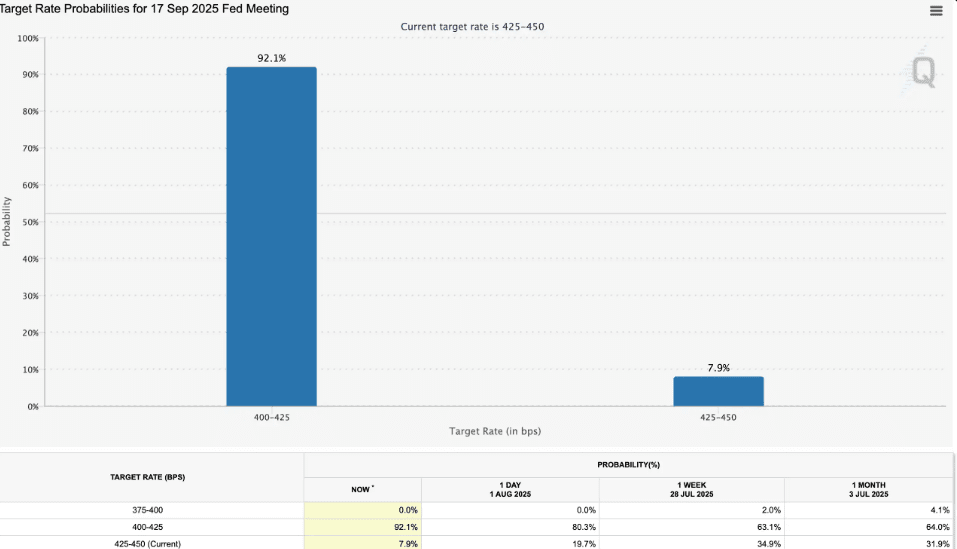
Next, Rhythm BlockBeats has compiled traders' views on the upcoming market conditions to provide some directional references for this week's trading.
What will the subsequent market trend be?
@CryptoHayes recently sold various tokens including ETH, ENA, and PEPE, cashing out nearly $13 million, and explicitly stated a bearish outlook for the market, expecting BTC to potentially retrace to the $100,000 level, while ETH may drop to $3,000.
He pointed out that the U.S. tariff bill may expire in the third quarter, which means that the fiscal stimulus will weaken; combined with the latest weak non-farm data, market concerns about sluggish economic growth are intensifying. Meanwhile, major economies have not released sufficient credit to support GDP, which has further heightened expectations for pressure on risk assets in the short term.
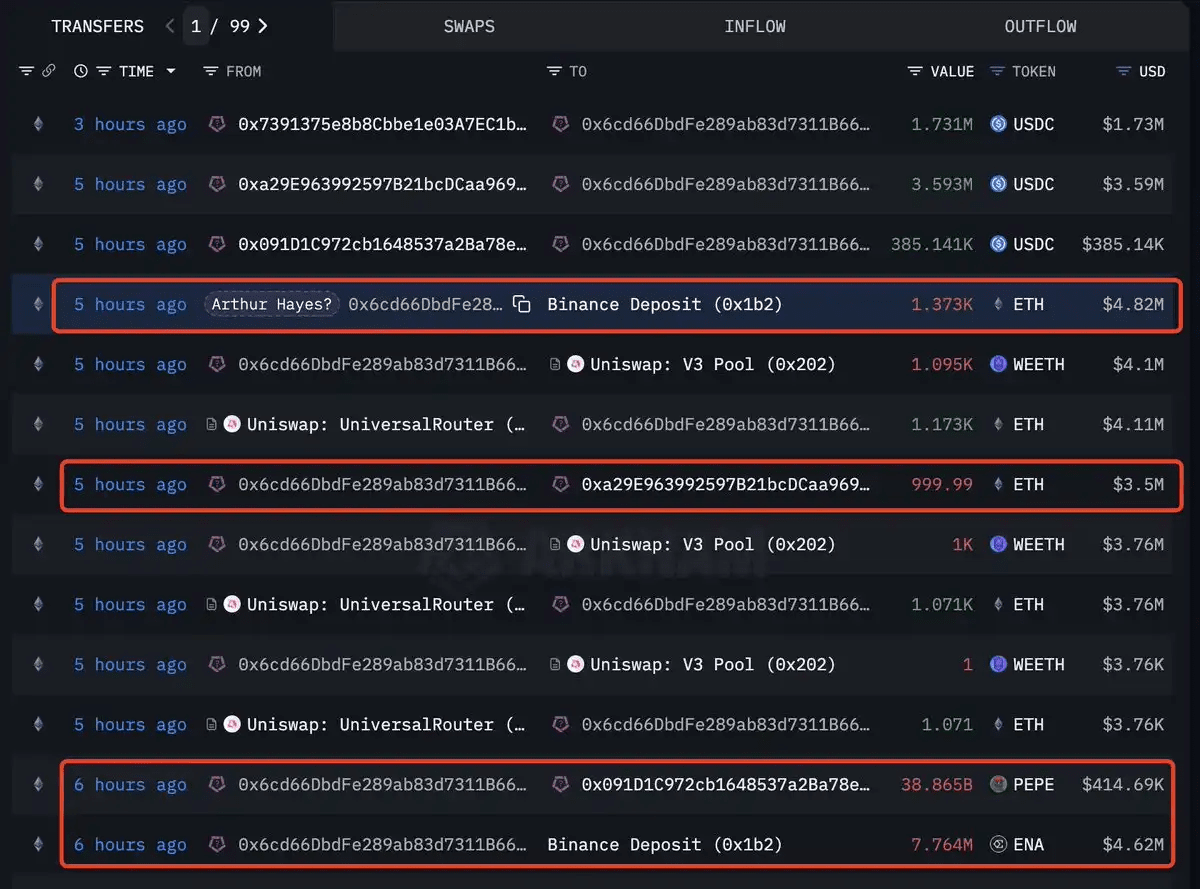
@qinbafrank
The market is likely to first exhaust the narrative of 'recession expectations', and then smoothly switch to the main line of 'interest rate cut expectations'. The logic is not difficult to understand—the U.S. stock market has hardly experienced any significant adjustments since April, and once there is a clearly unexpected negative data, it is easy to trigger a valuation correction, with U.S. stocks killing valuations, the crypto market killing leverage, and sentiment synchronously cooling down. However, from a medium to long-term perspective, this kind of correction is actually a positive.
At the macro policy level, the 'one body and two wings' combination is still supporting the market. 'One body' refers to the package of fiscal stimulus covered by the (Great American Beauty Act), including tax cuts, expanded defense and immigration spending, reduced welfare spending, and adjustments to the debt ceiling; 'two wings' refer to the (AI Action Plan) in the field of artificial intelligence and the (Stablecoin Bill) and (Digital Asset Market Institutional Bill) in the field of crypto assets. These policies not only release signals for future industrial investment but also strengthen the willingness of U.S. finance and industry to expand.
Fundamentally, the U.S. economy has not yet entered a recession zone, and corporate earnings reports are generally robust; once interest rates decline, the cost of servicing U.S. debt will also decrease, further freeing up fiscal space. It is noteworthy that the Federal Reserve governor Quarles, nominated by Biden, has announced his resignation and will leave office on August 8, which opens a window for Trump to appoint a new governor aligned with his position, which may directly affect the pace of rate cuts at the September meeting.
On August 4, after a short-term adjustment, U.S. stocks welcomed a rebound, with the S&P 500 index rising by 1.47% and the Nasdaq index increasing by 1.95%, showing that market sentiment is quickly warming from panic, and Trump also celebrated in a post-market statement.
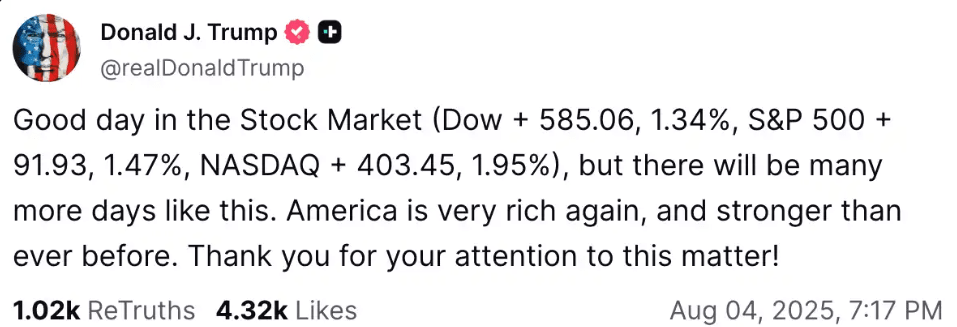
@Murphychen888
In a tweet on August 1, we concluded through an analysis of chip structure that 'once the important support of 117K is lost, filling the gap is a high-probability event.' The current gap at $112,000-$113,000 has already been filled, and this happens to be the middle position of two chip accumulation zones (A and B). Through testing, it once again verifies the effectiveness of the double anchor structure.
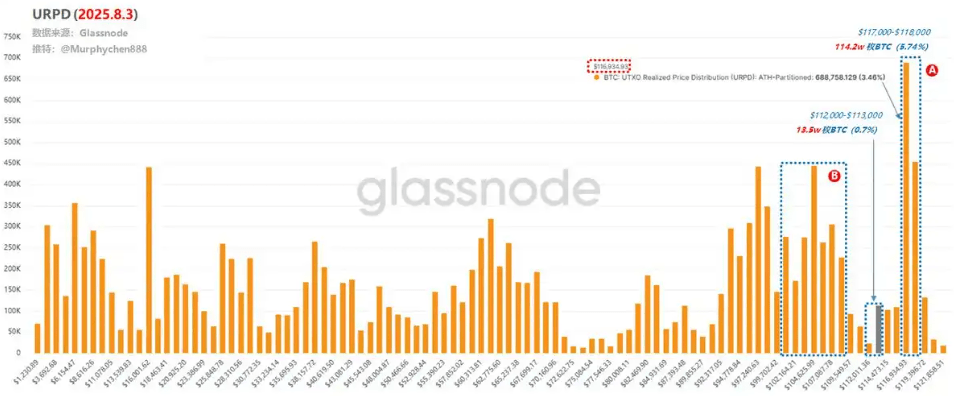
As of today, 135,000 BTC have changed hands in the $112,000-$113,000 range, with nearly half coming from high-level trapped chips in zone A. Switching from high to low positions will reduce overall holding costs and help the market find price consensus again. Once the indecisive floating loss/gain chips in zone A/B are all switched here, this will be a relative bottom.
Objectively speaking, based on the current chip distribution and operational logic, two possible scenarios may emerge:
1. A new accumulation zone is forming at $112,000-$113,000 (the chip column is getting higher), and the trapped chips in region A are gradually being digested (1.14 million BTC), then after a period of consolidation, BTC will attempt to break upwards again.
2. A large amount of chips in the A/B zone are loosening, and the market cannot hold up and continues to decline in search of support. This would take it into the B zone, which is also a truly strong support area in the BTC correction process, with both width and height (1.95 million BTC).
Does the coin-stock narrative have sustainability?
@fundstrat
Bitmine Chairman Tom Lee stated: 'Wall Street generally believes that Ethereum will be one of the most important macro trades in the next decade.'
Currently, BMNR holds 833,133 ETH, with a market value of about $3 billion—this is not only the largest ETH treasury in the world but also the third-largest crypto asset treasury globally. Lee emphasized that ETH remains one of the core macro trends for the next 10-15 years, as Wall Street pushes for the financialization of blockchain and the tokenization of AI-driven robotic assets, this trend will accelerate further.
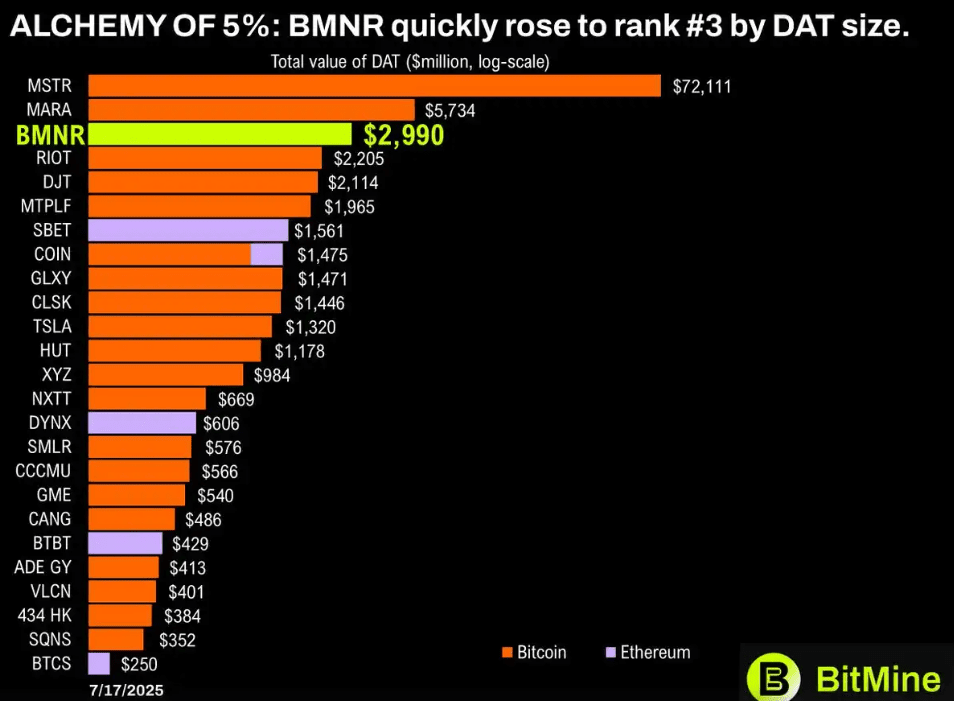
He pointed out that as the SEC and the White House launch Project Crypto, the U.S. financial market is accelerating its migration to the blockchain, and as the largest smart contract public chain, Ethereum is undoubtedly the biggest beneficiary. The key reason Wall Street favors ETH is its zero downtime record, and it has been adopted by traditional financial giants and tech companies like JPMorgan and Robinhood.
The Bitmine digital asset team expects that the fair value of ETH may reach $10,000-$20,000 in the next 12 months; the current wave of stablecoin is as significant for Ethereum as ChatGPT is for AI, which will accelerate Wall Street's entry. In the long term, as Wall Street tokenizes real-world assets (RWA) and migrates them onto the blockchain, while also participating in ETH staking on a large scale, the price of ETH is expected to challenge $60,000 or even higher, becoming the core infrastructure of on-chain finance, similar to NVIDIA's position in the AI wave.
@0xSunNFT
On July 29, the 'Shitcoin MicroStrategy' collectively plummeted, sparking discussions among traders about its sustainability. Currently, most traders in the market still hold an optimistic view on the 'ETH MicroStrategy', but are more cautious regarding other 'Shitcoin MicroStrategies'.
Trader @0xSunNFT pointed out that ETH has been the core engine of this round of increase since the end of June, driven by two main forces: first, institutions imitating MicroStrategy, making large purchases of ETH through equity financing; second, the warming of the stablecoin narrative, with ETH being the core infrastructure and settlement layer related to it.
Referring to the previous process where MicroStrategy drove BTC prices up, most altcoins still failed to outperform Bitcoin. For the ETH MicroStrategy, the funds injected through coin-stock and institutional investment are unlikely to spill over to other altcoins. Data shows that, according to CMC statistics, among the Top 200 tokens in the past 30 days, only 20 have outperformed ETH, most of which are driven by specific favorable events like Bonk, Zora, CFX, and ENA.
In terms of altcoin selection, the strategy still follows the previous short-selling logic: prioritize locking in targets with high market capitalization, non-leading, weak price action, and low presence, and adopt a diversified short-selling approach with strict stop-loss measures to prevent sudden surges in a single target.
Looking ahead to the second half of the year, if the market continues in a bullish pattern, it is highly likely to be led by ETH; if it turns into a bear market, altcoins may struggle to thrive independently, while ETH will at least still have institutional buying support.